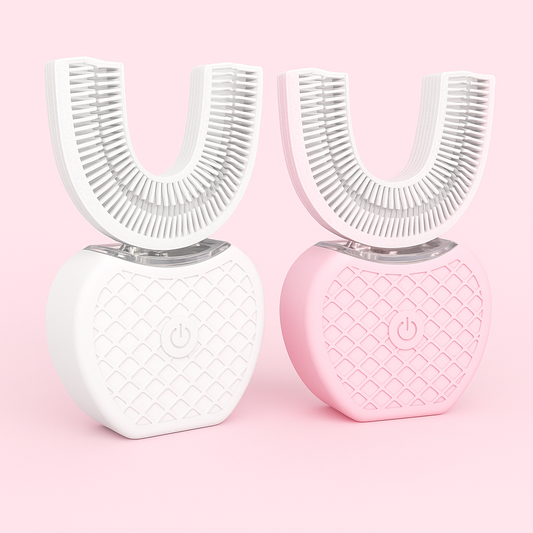Introduction
Fresh breath in dogs is more than just a pleasant trait—it’s a vital indicator of your pet’s overall oral and general health. In 2025, pet owners have access to a wealth of information, advanced veterinary care, and innovative products designed to keep dogs’ breath fresh and their mouths healthy. Bad breath, or halitosis, is often the first sign of dental problems such as plaque buildup, gum disease, or even systemic health issues. This comprehensive guide explores the most effective strategies you can adopt to maintain your dog’s breath fresh and clean, ensuring their happiness and wellbeing.
The Importance of Fresh Breath and Oral Health in Dogs
Your dog’s mouth is a gateway to their overall health. Poor oral hygiene can lead to periodontal disease, tooth decay, and infections that may spread to vital organs like the heart, kidneys, and liver. Moreover, chronic bad breath can make close moments with your furry friend less enjoyable. Addressing oral health proactively can prevent pain, costly treatments, and serious health complications down the line.
Understanding the Causes of Bad Breath in Dogs
Before diving into preventive measures, it’s important to understand what causes bad breath in dogs. Some common causes include:
- Poor Dental Hygiene: Accumulation of plaque and tartar leads to bacterial growth and foul odors.
- Gingivitis and Periodontal Disease: Inflammation and infection of gums cause persistent bad breath and discomfort.
- Oral Infections or Abscesses: Untreated dental issues can result in painful infections emitting strong odors.
- Diet and Eating Habits: Certain foods or eating dirt, garbage, or feces can contribute to bad breath.
- Underlying Medical Conditions: Diabetes, kidney disease, and gastrointestinal disorders can manifest as halitosis.
Recognizing these causes helps in selecting the most effective approach to maintain fresh breath.
Top 7 Comprehensive Tips to Keep Your Dog’s Breath Fresh in 2025
1. Schedule Regular Veterinary Dental Check-Ups
Professional dental examinations and cleanings by your veterinarian are foundational to your dog’s oral health. Annual or biannual visits allow your vet to detect early signs of dental disease, remove hardened tartar that brushing can’t tackle, and provide targeted treatments. In 2025, many veterinary clinics offer advanced dental technologies such as ultrasonic scaling and digital dental X-rays that help maintain your dog’s oral hygiene more effectively.
2. Establish a Consistent Teeth Brushing Routine
Brushing your dog’s teeth regularly is one of the most effective ways to prevent plaque buildup. Aim to brush at least 2-3 times per week, though daily brushing yields the best results. Tips for successful brushing include:
- Use a dog-specific toothbrush or finger brush designed for gentle cleaning.
- Choose enzymatic toothpaste formulated for dogs, avoiding human toothpaste which can be toxic.
- Start slowly by letting your dog taste the toothpaste and get used to the brush.
- Incorporate brushing into a calm routine, rewarding your dog afterward to build positive associations.
3. Provide Vet-Approved Dental Chews and Treats
Dental chews serve a dual purpose: they satisfy your dog’s natural urge to chew and help reduce plaque and tartar. When selecting dental chews, consider:
- Products approved by veterinary dental health organizations.
- Chews that have a texture that scrapes teeth surfaces effectively.
- Ingredients that are natural and safe, avoiding artificial additives or excessive calories.
Popular options include rawhide alternatives, specially designed dental sticks, and treats infused with breath-freshening ingredients.
4. Use Safe and Effective Water Additives
Water additives are an effortless way to support oral hygiene between brushing sessions. These solutions reduce bacteria and plaque accumulation by simply adding them to your dog’s water bowl. Important considerations when choosing water additives include:
- Vet recommendation and approval.
- Non-toxic, alcohol-free formulas.
- Easy application with no impact on water taste or your dog’s drinking habits.
Regular use can complement brushing and chewing routines, creating a more comprehensive oral care regime.
5. Incorporate Crunchy Fruits and Vegetables into Their Diet
Certain fresh fruits and vegetables act as natural toothbrushes by mechanically cleaning teeth and stimulating gums. Some healthy, dog-safe options include:
- Carrots
- Apple slices (without seeds)
- Celery sticks
- Cucumber slices
These foods also provide essential vitamins and fiber. Always introduce new foods gradually and ensure pieces are appropriately sized to prevent choking.
6. Support Digestive Health with Probiotics
Gut health can influence your dog’s breath since digestive issues sometimes cause unpleasant odors. Probiotics help balance intestinal flora and improve digestion, potentially reducing halitosis. When choosing probiotics:
- Consult your veterinarian to select strains and formulations suited to your dog’s health.
- Follow dosage instructions carefully to avoid digestive upset.
- Opt for high-quality supplements with proven efficacy.
7. Try Homemade Dental Care Remedies Safely
Homemade dental solutions can be a cost-effective way to maintain oral hygiene when used correctly. Examples include:
- A paste made from baking soda and water to gently clean teeth.
- Parsley-infused water or treats to naturally freshen breath.
- Coconut oil applications, which have antimicrobial properties.
Important: Always verify that ingredients are safe and non-toxic for dogs. Avoid any recipe containing garlic, onion, or artificial sweeteners like xylitol.
Additional Strategies to Optimize Your Dog’s Oral Health
Beyond these top tips, consider these supporting habits to enhance your dog’s oral hygiene:
- Monitor Breath and Oral Condition Regularly: Look out for persistent bad breath, swollen or bleeding gums, loose teeth, or excessive drooling.
- Avoid Harmful Foods: Steer clear of sugary treats, human junk food, or items that can get stuck in teeth.
- Hydration is Key: Fresh water helps wash away food particles and bacteria.
- Choose Dental Toys: Toys with textured surfaces encourage chewing that helps clean teeth and massage gums.
- Maintain a Balanced Diet: Feeding high-quality dog food supports overall health including oral tissues.
Signs You Should See a Veterinarian Immediately
While most bad breath cases result from manageable dental hygiene issues, some signs warrant urgent veterinary attention:
- Severe, persistent foul odor despite home care.
- Swelling or lumps in the mouth or face.
- Excessive bleeding, difficulty eating, or drooling.
- Sudden changes in behavior, such as lethargy or loss of appetite.
Early diagnosis and treatment can prevent complications and make your dog more comfortable.
Conclusion
Maintaining your dog’s breath fresh and clean in 2025 requires a thoughtful combination of veterinary care, daily hygiene routines, diet management, and the right products. By understanding the causes of bad breath and implementing these comprehensive tips, you can help your dog avoid dental disease, improve their wellbeing, and enjoy closer, more affectionate moments together.
Remember, consistent care is the key to success. Consult your veterinarian regularly to tailor an oral care plan suited to your dog’s individual needs. With dedication and the right approach, your furry friend can enjoy fresh breath and a healthy mouth throughout their life.
Start today by scheduling that next dental check-up, picking up quality dental chews, or introducing a brushing routine—your dog will thank you with every wag and lick!


